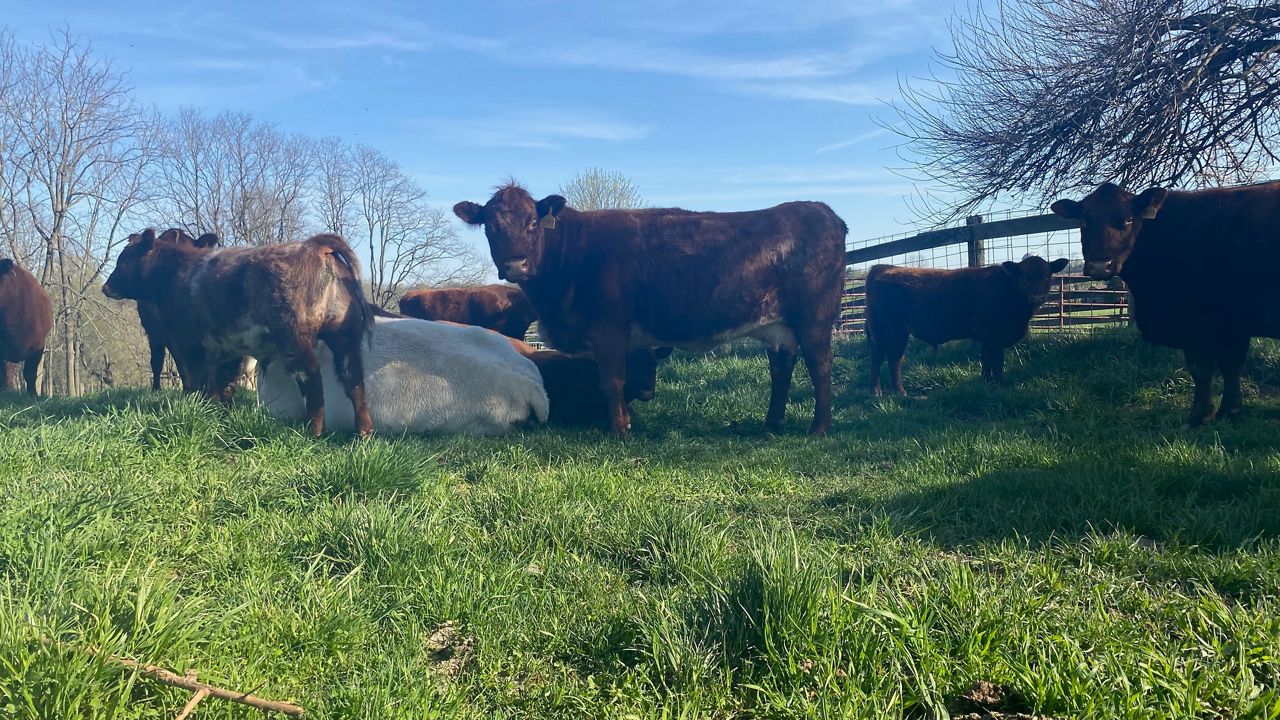PROSPECT, Ky. — Ragsdale Sutherland Shorthorns has been breeding cattle for 50 years in Prospect, Ky.
“Well, I grew up on a farm, my dad managed farms for the Brown family here in Prospect affiliated with the Brown Forman Distillery and I think there were four different farms,” David Ragsdale, a rancher with Ragsdale Sutherland Shorthorns, said.
According to the University of California Davis, cattle are the number one agriculture source of greenhouse gasses worldwide. Those researchers say each year a cow will belch 220 pounds of methane.

“Everyone used to think photosynthesis does not have much to do with farming but it has everything to do with farming,” Ragsdale said. “If we rotate them and we retain some water on the property, we plant trees and we do some other things, I think we can benefit.”
Ragsdale’s goal is to offset the methane levels by rotating his herd of 50 cows every 10 days and making their diet easier to digest.
“We have a grass-based product that we feed non-GMO corn to and some soybeans meals. Most of the product that we use in supplementation of the cattle is non-GMO, so it’s not been sprayed with Roundup,” Ragsdale said.
Between showing cattle and selling beef, Ragsdale doesn’t have a lot of downtime. He also knows there’s a need for more local beef processors.
“We’d like to do more but processors are backed up and I understand their dilemma. A lot of them are short of help and more people are processing beef,” Ragsdale said. “I think 880 thousand head of cattle last year in the United States got processed by local processors more than the previous year.”
Kentucky ranks 8th in the nation for the number of beef cows on farms, thanks in part to its climate.
“We don’t have very bad weather really,” Ragsdale said. “We have some storms, we have a few cold snaps but generally we can raise cattle on grass nine to 10 months out of the year. If we do it just right, we can do it the whole year.”
The USDA recently committed $215 million to support the expansion of meat and poultry processing options. Cattle also counted for $1 billion in sales, ranking second behind poultry.



